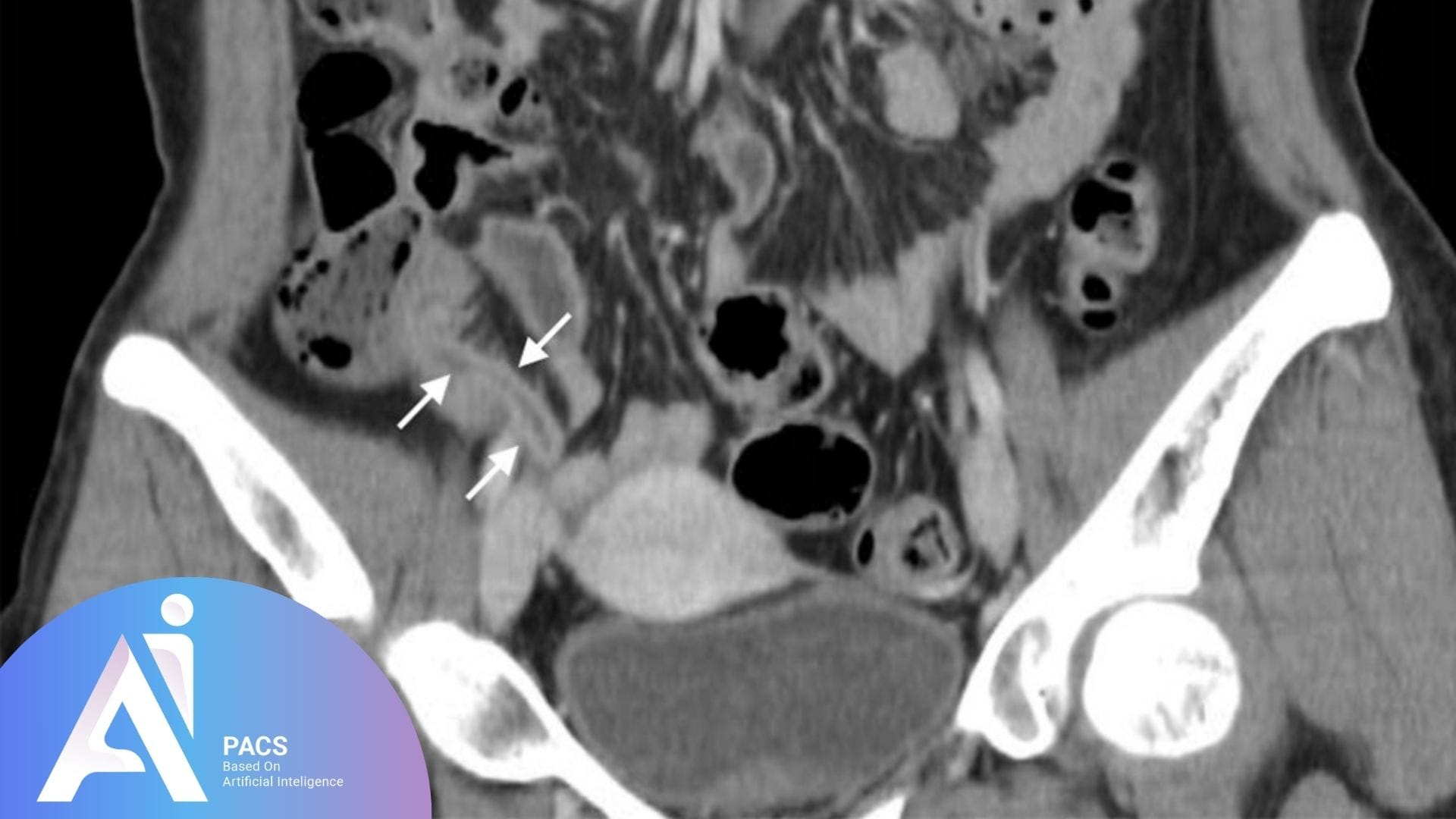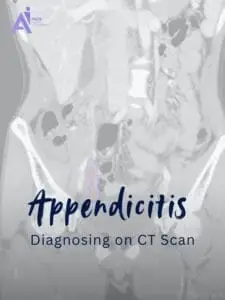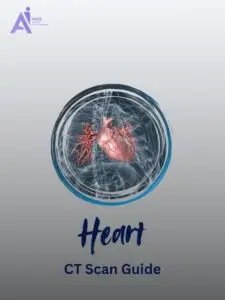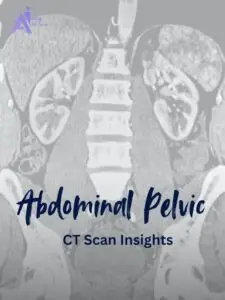Appendicitis and its symptoms
Appendicitis is the inflammation of the appendix, a small, finger-shaped pouch attached to the large intestine. It is considered a medical emergency that requires prompt treatment to prevent complications. The condition can develop rapidly and presents a range of symptoms, including:
- Abdominal pain: Often starting around the navel and shifting to the lower right side.
- Nausea and vomiting: Commonly occurring soon after the onset of pain.
- Loss of appetite: A sudden aversion to food is a typical symptom.
- Fever: Low-grade fever that may worsen as the condition progresses.
- Digestive disturbances: Symptoms like constipation, diarrhea, or difficulty passing gas.
Early recognition of these symptoms is vital for timely intervention, as untreated appendicitis can lead to complications like a ruptured appendix or peritonitis.
Role of CT scans in diagnosing appendicitis
CT scans play a vital role in diagnosing appendicitis, especially in cases where symptoms are unclear or overlap with other abdominal conditions. CT scans can accurately detect the appendix’s inflammation, swelling, or abscess formation by providing detailed cross-sectional images. Contrast agents enhance image clarity, making confirming or ruling out appendicitis easier. Their speed, precision, and ability to guide prompt treatment decisions make CT scans a preferred diagnostic tool, particularly in emergencies.
What is a CT Scan?
A CT (Computed Tomography) scan is a medical imaging technique that uses X-ray technology to create detailed cross-sectional images of the body. It combines multiple X-ray images taken from different angles and processes them using a computer to generate a comprehensive view of internal structures. CT scans commonly diagnose and evaluate various conditions, including injuries, infections, tumors, and inflammatory diseases. A CT scan provides detailed visualization of organs, blood vessels, and soft tissues for abdominal conditions, making it an essential diagnostic tool in modern medicine.
How it differs from other imaging methods (e.g., ultrasound, X-ray)
CT scans differ significantly from other imaging methods like X-rays, MRI, and ultrasounds in their technology and diagnostic capabilities:
- X-ray: This provides a simple two-dimensional image suitable for detecting fractures or certain lung and bone conditions, but lacks the detailed clarity needed for soft tissues.
- Ultrasound: This technique uses sound waves to create real-time images. It’s often used for soft tissue evaluation, like gallbladder or pregnancy assessments. However, it’s limited by depth and clarity in some areas, especially in detecting deep abdominal structures.
- CT Scan: Offers highly detailed 3D images, precisely capturing multiple layers of internal structures. It is more effective for identifying subtle or complex conditions like appendicitis, abscesses, or tumors.
Advantages of CT scans for abdominal conditions
Abdominal conditions, CT scans provide several advantages for comprehensive evaluation:
- Detailed Imaging: They capture clear, comprehensive images of abdominal organs, blood vessels, and tissues, which is crucial for diagnosing issues like appendicitis, bowel obstruction, or tumors.
- Speed: The scan process is quick and invaluable in emergencies.
- Use of Contrast: Contrast agents can enhance visibility, allowing for better differentiation between normal and abnormal tissues.
- Non-Invasive: Unlike exploratory surgery, a non-invasive CT scan poses minimal risk.
- Broad Application: It can detect various conditions, from infections and inflammation to bleeding and cancer.
These features make CT scans a preferred diagnostic tool, particularly for complex or ambiguous abdominal symptoms.
Why is a CT Scan Used for Appendicitis?
A CT scan is one of the most reliable tools for diagnosing appendicitis, especially in cases where symptoms are unclear or overlap with other abdominal conditions. Appendicitis can mimic other disorders, such as ovarian cysts, gastrointestinal infections, or kidney stones, making accurate diagnosis essential. A CT scan provides highly detailed, cross-sectional images of the abdomen, allowing doctors to precisely identify signs of appendicitis, such as an enlarged or inflamed appendix, abscesses, or signs of perforation.
CT scans are preferred for their speed and accuracy, particularly in emergencies where prompt treatment is critical to prevent complications like rupture or peritonitis. In some cases, contrast agents further enhance the imaging, making differentiating appendicitis from other conditions easier. This ability to quickly confirm or rule out appendicitis makes CT scans an invaluable tool for guiding treatment decisions, whether surgical or conservative.
When is a CT Scan Recommended?
A CT scan is recommended when a patient exhibits symptoms that strongly suggest appendicitis, but further confirmation is needed to make an accurate diagnosis. This imaging technique is beneficial in cases where the symptoms are atypical, overlap with other abdominal conditions, or when physical examinations and initial tests, like blood work or ultrasound, do not provide a clear answer. CT scans are often suggested for adults and adolescents, as their symptoms can be less straightforward compared to younger children. Additionally, they are used when complications such as a ruptured appendix or abscess are suspected.
Common signs and symptoms that prompt a CT scan
Doctors may recommend a CT scan if a patient presents with:
- Severe abdominal pain: Typically starting near the navel and moving to the lower right side.
- Nausea and vomiting: Especially when accompanied by abdominal discomfort.
- Fever: Low-grade fever that worsens over time.
- Loss of appetite: A sudden and marked aversion to eating.
- Rebound tenderness: Pain intensifies when pressure on the abdomen is released.
These symptoms and inconclusive clinical evaluations make CT scans a crucial next step.
Use of CT scans in emergencies for appendicitis diagnosis
In emergency settings, similar to trauma cases, where appendicitis is suspected, a CT scan is invaluable for its speed and accuracy. Delayed diagnosis can lead to complications such as a ruptured appendix, which increases the risk of peritonitis or abscess formation. CT scans provide rapid and precise imaging, enabling healthcare providers to confirm appendicitis and determine its severity. This quick turnaround helps facilitate timely interventions, such as surgery or antibiotics, minimizing the risk of complications and improving patient outcomes.
How is an Appendicitis CT Scan Performed?
An appendicitis CT scan is a straightforward and non-invasive procedure designed to capture detailed images of the abdomen. The patient typically lies on a motorized table that slides into the CT scanner, a large circular machine. Depending on the case, a contrast agent may be administered orally, intravenously, or both to enhance the visibility of the appendix and surrounding tissues. The scanner takes multiple X-ray images from various angles, which a computer combines into cross-sectional views of the abdominal area. The procedure is painless and usually takes about 10 to 30 minutes. Throughout the scan, the patient may be asked to hold their breath momentarily to ensure clear images. A radiologist then reviews the results to diagnose or rule out appendicitis.
Interpreting CT Scan Results for Appendicitis
CT scan results for appendicitis are essential for confirming the diagnosis and assessing the severity of the condition. The images provide detailed insights into the appendix and surrounding tissues, helping doctors determine the best course of treatment. Accurate interpretation of these scans can mean the difference between timely intervention and unnecessary complications.
What doctors look for is an enlarged appendix, inflammation, or rupture
When interpreting CT scan results, doctors focus on identifying critical signs of appendicitis, such as:
- Enlarged appendix: An appendix diameter greater than 6 mm often indicates inflammation.
- Inflammation: Thickened walls, fat stranding (inflammatory changes in nearby fat), or fluid buildup around the appendix.
- Rupture or perforation: Evidence of abscesses, free air, or fluid in the abdominal cavity, indicating a more advanced or severe case.
These findings guide decisions on whether surgery or conservative treatment is appropriate.
Differentiating appendicitis from other abdominal conditions
Appendicitis symptoms can overlap with other conditions, such as gastrointestinal infections, ovarian cysts, diverticulitis, or kidney stones. CT scans help differentiate these by providing detailed views of the structures involved. For example:
- Diverticulitis: Inflammation is seen in the colon rather than the appendix.
- Ovarian issues: Identifiable cysts or masses near the reproductive organs.
- Kidney stones: Visible stones in the urinary tract, which may mimic appendicitis pain.
This differentiation ensures the correct diagnosis and avoids unnecessary surgical interventions.

Importance of radiologist expertise in accurate diagnosis
Radiologists play a crucial role in interpreting CT scan results accurately. Their expertise ensures subtle signs of appendicitis, such as mild inflammation or early abscess formation, are not overlooked. They are also skilled in distinguishing appendicitis from conditions with similar imaging appearances, reducing the risk of misdiagnosis. Collaboration between radiologists and clinicians ensures patients receive the most effective and timely treatment based on precise imaging interpretations.
Given the critical nature of appendicitis diagnosis, consider getting a second opinion on your CT scan for additional peace of mind.
📑 Curious About What a Real CT Scan Report Looks Like?
When your doctor orders a CT scan for suspected appendicitis, the final report becomes a key part of your diagnosis and treatment plan. But for many patients, these reports are filled with complex medical terms and technical descriptions.
If you’d like to understand how CT scan findings are typically structured and presented, check out this clear and practical example of a standard CT report. It can help you feel more informed and confident when discussing your results with your healthcare provider.
For personalized help understanding your appendicitis CT scan results, our expert radiologists provide detailed interpretations.
Benefits and Risks of a CT Scan for Appendicitis
CT scans are a powerful tool for diagnosing appendicitis, offering significant benefits alongside some risks that should be carefully considered.
Benefits
- High Accuracy: CT scans provide detailed images, making them one of the most reliable methods for diagnosing appendicitis, even in complex or atypical cases.
- Speed: The procedure is quick, often taking only 10–30 minutes, making it ideal for emergencies where rapid diagnosis is essential.
- Non-Invasive: Unlike exploratory surgery, CT scans are non-invasive and require minimal preparation.
- Differentiation: They help differentiate appendicitis from other abdominal conditions, reducing the likelihood of unnecessary surgeries.
Risks
- Radiation Exposure: CT scans involve exposure to ionizing radiation, which may slightly increase the lifetime risk of developing cancer, particularly with repeated scans.
- Contrast Reactions: In some cases, contrast agents used to enhance images can cause allergic reactions or kidney problems, particularly in individuals with pre-existing conditions.
- Cost: CT scans can be expensive compared to other diagnostic tools like ultrasound, which might not be accessible to all patients.
While the risks are generally minimal, the benefits of a CT scan in accurately diagnosing appendicitis and preventing complications far outweigh potential concerns, especially when used judiciously in appropriate cases.
CT Scan vs. Other Diagnostic Methods for Appendicitis
Comparison with ultrasound, MRI, and physical examination
Ultrasound is non-invasive and radiation-free but less accurate for deep abdominal imaging, especially in adults. MRI provides excellent soft tissue details but is more time-consuming and costly. Physical examination helps identify symptoms but lacks the precision to confirm appendicitis definitively.
Why CT scans are often the preferred choice in appendicitis cases
CT scans are preferred for their high accuracy, speed, and ability to detect complications like abscesses or perforations. They provide clear, detailed images, making them ideal for routine and emergency diagnosis, particularly in ambiguous cases.
Aftercare for a CT Scan
After a CT scan, most patients can resume their normal activities immediately. If a contrast agent was used, drinking plenty of water is essential to help flush it out of your system. Patients should inform their doctor if they experience any unusual symptoms, such as a rash, itching, or swelling, which could indicate an allergic reaction to the contrast. For those who received intravenous contrast, slight bruising or soreness at the injection site is normal and should subside quickly. If you feel any discomfort or have questions about your results, it’s essential to follow up with your healthcare provider.
Understanding your appendicitis CT results is crucial for proper follow-up care. If your scan shows findings that require monitoring or if you have questions about your diagnosis, seeking a professional interpretation can help clarify your treatment path and ensure optimal recovery.
Conclusion
CT scans play an essential role in the timely and accurate diagnosis of appendicitis. Their ability to provide detailed images of the appendix and surrounding tissues makes them reliable for distinguishing appendicitis from other abdominal conditions and identifying potential complications. While there are some risks, such as radiation exposure and contrast reactions, the benefits of precise diagnosis and prompt treatment far outweigh these concerns. By ensuring proper evaluation and care, CT scans significantly improve outcomes for patients presenting with appendicitis symptoms.
💡 Unsure about your results? Get a second opinion from expert radiologists today




